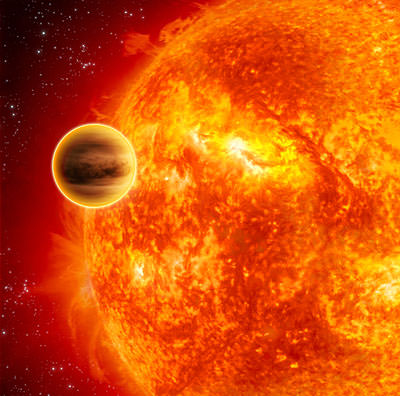[/caption]
How many are in the Milky Way, though? There could be billions, many of them habitable and Earth-like, according to some astronomers. Our ability to detect planets orbiting other stars has been around for less than 20 years, and most of the planets discovered to date are much larger than Jupiter (in fact, extrasolar planets are commonly measured in “Jupiter masses”.)
There are a few different methods for detecting exoplanets. The primary techniques are astrometry and radial velocity measurements. Astrometry is basically measuring the gravitational influence of a planet as it orbits its star. How much it pulls the star side to side can give a lot of information as to the amount of mass the planet has. Measuring radial velocity is much like astrometry, only with this method the amount the star moves toward and away from the Earth is measured by observing the Doppler shift of the light coming from the star.
Another technique is called the transit method. As a planet orbits in front of its star, the light coming from the star is dimmed, and by observing the star for long periods of time, and taking the spectrum of the light both when the planet is in front of the star and behind, much can be known about the makeup of the planet’s atmosphere (if there is any). The transit method is often used in combination with astrometry and radial velocity measurements to estimate the mass of the planet.
Other methods for detecting planets are explained on the European Space Agency’s website and Curious About Astronomy. If you want a complete list of all planets detected so far, NASA’s PlanetQuest site is a great place to start, as well as The Extrasolar Planets Encyclopaedia.
Direct imaging of extrasolar planets is very difficult, as the overwhelming amount of light coming from the star a planet is orbiting completely washes it out. However, Hubble has imaged the planet Fomalhault b, and the system HR8799, which consists of three planets, was imaged using the Keck and Gemini telescopes.
There are currently a number of NASA missions working on the discovery of extrasolar planets, including Hubble, and the Spitzer Space Telescope. The Kepler mission, launched on March 6th of 2009, will monitor a section of the sky containing over 100,000 stars and use the methods described above in an effort to detect an exoplanets in that region. The Terrestrial Planet Finder mission is another mission to study all aspects of extrasolar planets in rather great detail, though it is still in the concept phase as of this writing.
Exoplanets were discussed on Astronomy Cast in Episode 34: Discovering Another Earth and Episode 125: A Zoo of Extrasolar Planets.
Source: NASA

